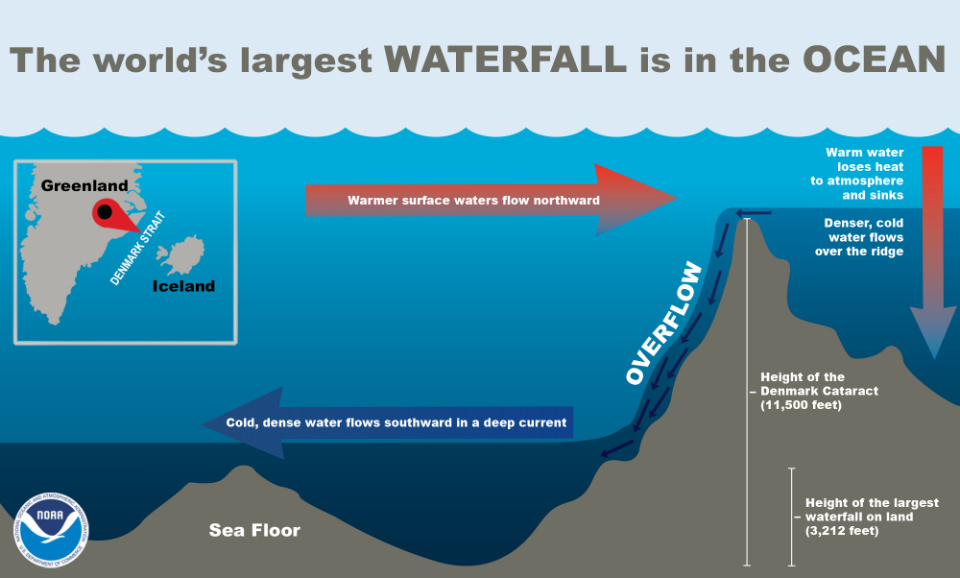The U.S. National Ocean Service answers “Where is Earth’s Largest Waterfall?”
[T]he world’s largest waterfall lies beneath the Denmark Strait, which separates Iceland and Greenland. At the bottom of the strait are a series of cataracts that begin 2,000 feet under the strait’s surface and plunge to a depth of 10,000 feet at the southern tip of Greenland—nearly a two-mile drop.
But how can there be waterfalls in the ocean? It’s because cold water is denser than warm water, and in the Denmark Strait, southward-flowing frigid water from the Nordic Seas meets warmer water from the Irminger Sea. The cold, dense water quickly sinks below the warmer water and flows over the huge drop in the ocean floor, creating a downward flow estimated at well over 123 million cubic feet per second. Because it flows beneath the ocean surface, however, the massive turbulence of the Denmark Strait goes completely undetected without the aid of scientific instruments.
The water flow per second down the Denmark Strait cataract is around 1200 times that of Niagra Falls.
